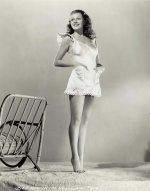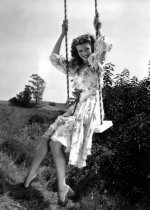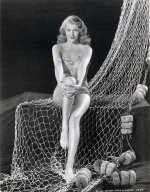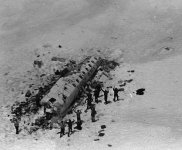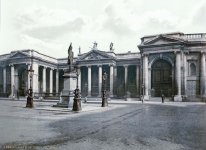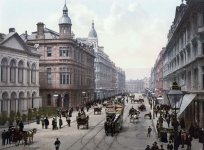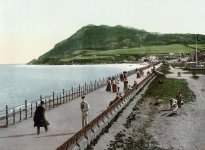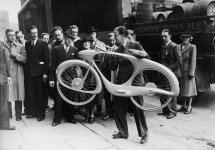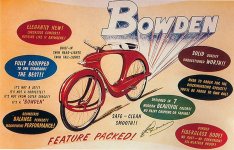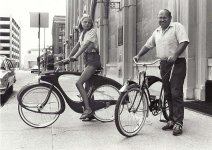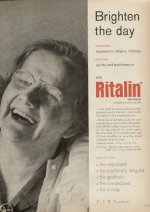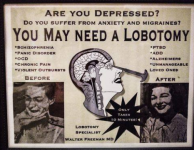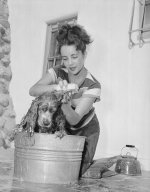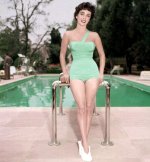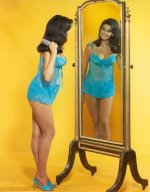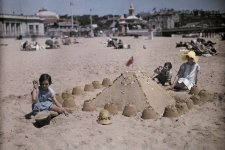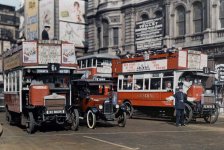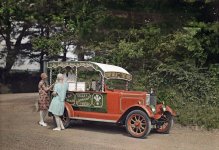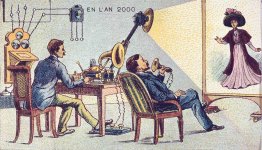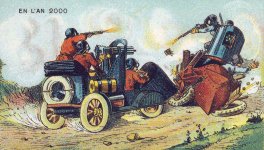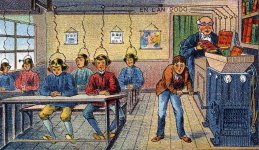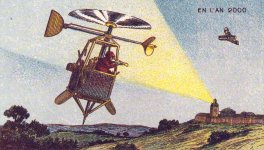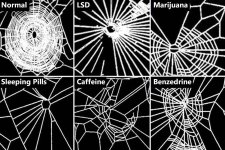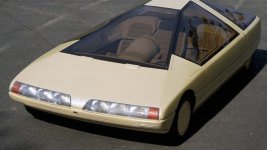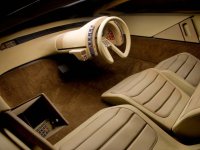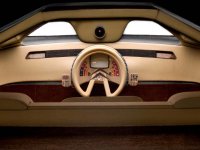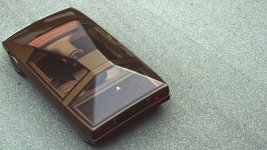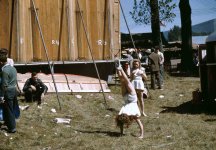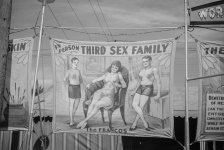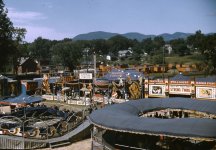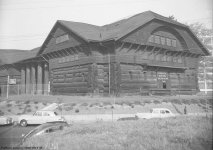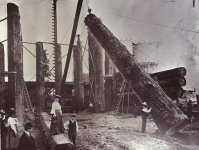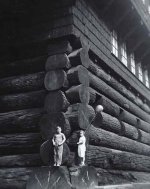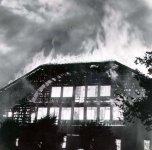Install the app
How to install the app on iOS
Follow along with the video below to see how to install our site as a web app on your home screen.
Note: This feature currently requires accessing the site using the built-in Safari browser.
You are using an out of date browser. It may not display this or other websites correctly.
You should upgrade or use an alternative browser.
You should upgrade or use an alternative browser.
Blast from the past
- Thread starter Administrator
- Start date
The Spacelander bicycle was designed by Benjamin Bowden for the 1946 exhibition Britain Can Make It. Originally known as the Classic, the streamlined design was said to represent what the bicycle of the future was supposed to look like.
Its curving lines and amoeba-like voids represent the mutation of the prewar streamlined style into a new expression based on organic, rather than machine-made, forms.
The frame was made from two steel clamshell halves pressed together into a monocoque and the front fork and mudguard were all one piece.
The prototype featured a driveshaft and a hub dynamo that stored energy when riding downhill and gave a boost when riding uphill. The batteries inside the frame powered lights, a horn, and a built-in radio.
Although the bicycle?s unusual appearance created substantial public interest initially, British bicycle makers were reluctant to invest in the high degree of re-tooling needed to manufacture the bicycle.
Bowden moved to the US to seek backing for the bike and over a decade later, in 1960, the production Spacelander was built in Michigan. The manufacturer suggested molding the bicycle in fiberglass instead of aluminum.
Although he retained the futuristic appearance of the Classic, Bowden abandoned the hub dynamo and replaced the drive-train with a more common sprocket-chain assembly. The new name, Spacelander, was chosen to capitalize on interest in the Space Race.
Financial troubles forced Bowden to rush the development of the Spacelander, which was released in 1960 in five colors: Charcoal Black, Cliffs of Dover White, Meadow Green, Outer Space Blue, and Stop Sign Red.
The bicycle was priced at $89.50, which made it one of the more expensive bicycles on the market. In addition, the fiberglass frame was relatively fragile, and its unusual nature made it difficult to market to established bicycle distributors.
Only 522 Spacelander bicycles were shipped before production was halted, although more complete sets of parts were manufactured.
Beginning in the 1980s, there was a resurgence of interest in the Spacelander as a collectors? item. The Bicycle Museum in Pennsylvania owns 17 of the proposed 38 left Spacelanders in the world.
Its curving lines and amoeba-like voids represent the mutation of the prewar streamlined style into a new expression based on organic, rather than machine-made, forms.
The frame was made from two steel clamshell halves pressed together into a monocoque and the front fork and mudguard were all one piece.
The prototype featured a driveshaft and a hub dynamo that stored energy when riding downhill and gave a boost when riding uphill. The batteries inside the frame powered lights, a horn, and a built-in radio.
Although the bicycle?s unusual appearance created substantial public interest initially, British bicycle makers were reluctant to invest in the high degree of re-tooling needed to manufacture the bicycle.
Bowden moved to the US to seek backing for the bike and over a decade later, in 1960, the production Spacelander was built in Michigan. The manufacturer suggested molding the bicycle in fiberglass instead of aluminum.
Although he retained the futuristic appearance of the Classic, Bowden abandoned the hub dynamo and replaced the drive-train with a more common sprocket-chain assembly. The new name, Spacelander, was chosen to capitalize on interest in the Space Race.
Financial troubles forced Bowden to rush the development of the Spacelander, which was released in 1960 in five colors: Charcoal Black, Cliffs of Dover White, Meadow Green, Outer Space Blue, and Stop Sign Red.
The bicycle was priced at $89.50, which made it one of the more expensive bicycles on the market. In addition, the fiberglass frame was relatively fragile, and its unusual nature made it difficult to market to established bicycle distributors.
Only 522 Spacelander bicycles were shipped before production was halted, although more complete sets of parts were manufactured.
Beginning in the 1980s, there was a resurgence of interest in the Spacelander as a collectors? item. The Bicycle Museum in Pennsylvania owns 17 of the proposed 38 left Spacelanders in the world.
Attachments
These photographs were taken in 1940 by John Topham while he was visiting the base of the Royal Artillery Coastal Defence Battery at Shornemead Fort, near Gravesend, in Kent.
The intention had been to photograph the British troops rehearsing in drag for their Christmas charity performance which also was another way to keep themselves entertained.
Suddenly the troops were scrambled to deal with the approach of Luftwaffe bombers flying across the Channel to mount raids over southern England. With no time to change back into their uniforms, the men went to their battle stations still dressed head to toe in women?s clothing and wearing their helmets.
The intention had been to photograph the British troops rehearsing in drag for their Christmas charity performance which also was another way to keep themselves entertained.
Suddenly the troops were scrambled to deal with the approach of Luftwaffe bombers flying across the Channel to mount raids over southern England. With no time to change back into their uniforms, the men went to their battle stations still dressed head to toe in women?s clothing and wearing their helmets.
Attachments
-
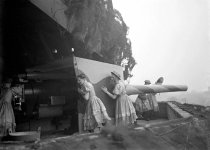 british-soldiers-manning-anti-aircraft-guns-in-womens-clothes-1940 (1).jpg85.9 KB · Views: 0
british-soldiers-manning-anti-aircraft-guns-in-womens-clothes-1940 (1).jpg85.9 KB · Views: 0 -
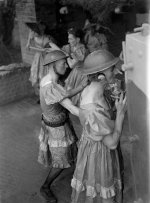 british-soldiers-manning-anti-aircraft-guns-in-womens-clothes-1940 (3).jpg134.5 KB · Views: 0
british-soldiers-manning-anti-aircraft-guns-in-womens-clothes-1940 (3).jpg134.5 KB · Views: 0 -
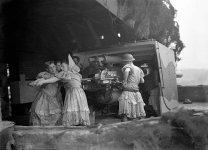 british-soldiers-manning-anti-aircraft-guns-in-womens-clothes-1940 (5).jpg111.4 KB · Views: 0
british-soldiers-manning-anti-aircraft-guns-in-womens-clothes-1940 (5).jpg111.4 KB · Views: 0 -
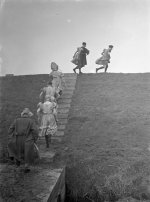 british-soldiers-manning-anti-aircraft-guns-in-womens-clothes-1940 (8).jpg182.1 KB · Views: 0
british-soldiers-manning-anti-aircraft-guns-in-womens-clothes-1940 (8).jpg182.1 KB · Views: 0
Elizabeth Taylor in the 1950s
Attachments
Former actress and sex symbol Raquel Welch dead at 82
Former actress and sex symbol Raquel Welch has died at the age of 82 after a brief illness, it?s been confirmed.
Former actress and sex symbol Raquel Welch has died at the age of 82 after a brief illness, it?s been confirmed.
Attachments
In 1899, a group of French illustrators led by Jean-Marc C?t? was tasked with imagining what France would look like in the year 2000. Their ideas weren?t always on the money but many have been realized albeit not exactly according to the original drawings.
Known as France in the Year 2000 (sometimes as En L?An 2000 ? In the Year 2000), these futuristic pictures were released in four installments?in 1899, 1900, 1901, and 1910?and took the form of cigarette/cigar box inserts and, later, postcards.
Known as France in the Year 2000 (sometimes as En L?An 2000 ? In the Year 2000), these futuristic pictures were released in four installments?in 1899, 1900, 1901, and 1910?and took the form of cigarette/cigar box inserts and, later, postcards.
Attachments
Citro?n Karin: A bizarre French concept car that looked like a pyramid spaceship on wheels, 1980
Attachments
Amazing photos show the festivities at the Rutland State Fair in Vermont, 1941
Attachments
One of the world?s largest log cabin: The magnificent Forestry Building in Portland that was lost in a fire, 1964



